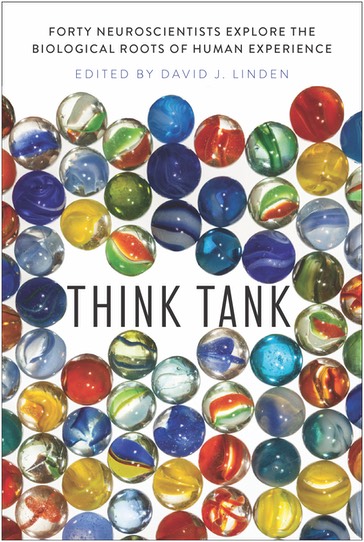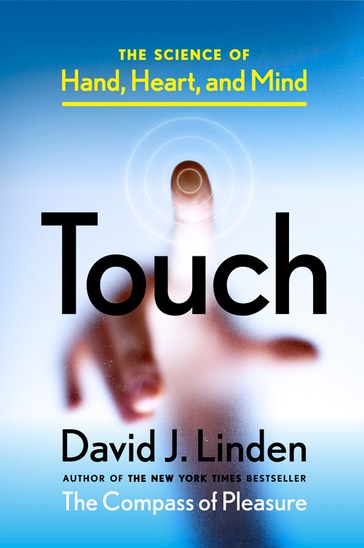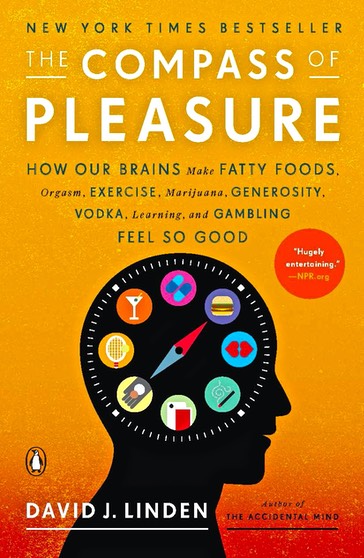Jeff Tweedy, leader of the roots-inflected rock bands Wilco and Uncle Tupelo, struggled mightily with various drug addictions, most notably to prescription painkillers, alcohol, and cigarettes. These were coincident with, and in some cases triggered by, chronic migraines, major depression, and panic attacks that have plagued him for years. After a successful rehab and several years of drug-free living he had this to say about his life:
I’ve never felt better. I’ve never been healthier. . . . I run four or five miles, four or five times a week, but I broke both my legs running too much last summer. I had stress fractures in both my tibias from running too much. You know, once you’re an addict, you’re always an addict, so just because I found something good to do doesn’t mean I’m not going to hurt myself doing it. [Pitchfork Media interview]
Yes, exercise can activate the brain's pleasure circuit. And so, like nicotine or orgasm or food or gambling, it can become a substrate for addiction as well. This can indeed be a genuine addiction, not merely one as expressed in a common usage like, “I’m addicted to sleeping on 600-thread-count sheets.” Real exercise addicts display all of the hallmarks of substance addicts: tolerance, craving, withdrawal, and the need to exercise “just to feel normal.” Does this make exercise a virtue, a vice, or a little of both?
In addition to the beneficial long-term effects of a sustained exercise program, there are also short-term benefits of exercise that wear off after an hour or two. These include an increased pain threshold, reduction of acute anxiety and “runner’s high.” Runner’s high (which can occur following any intense aerobic exercise, not just running) is a short-lasting, deeply euphoric state that’s well beyond the simple relaxation or peacefulness felt by many following intense exercise. Careful surveys have revealed it to be rather rare: The majority of athletes, whether amateur or professional, never experience it at all, and those who do, only do so intermittently. Indeed, many distance runners or swimmers feel merely drained or even nauseated at the end of a long race, not blissful. Since the 1970s runners high has been attributed in the popular imagination to the exercise-triggered production of endorphins, the brain’s own morphine-like molecules. This idea was initiated by a series of studies in which blood was drawn from subjects before and after intense exercise. Analysis revealed an exercise-associated increase in the level of a particular endorphin, called beta-endorphin, in the blood.
There’s a major problem, however, in trying to link runner’s high with circulating beta-endorphin . Beta-endorphin almost completely fails to cross the cellular barrier that separates the bloodstream from the brain. If beta-endorphin in the bloodstream were indeed responsible for runner’s high, then it would have to increase levels of some other chemical messenger that would then cross into the brain to exert its effects. Alternatively, there are different types of endorphins (and their related molecules called enkephalins, which together with endorphins are called “endogenous opioids”) that are synthesized within the brain and therefore could cause euphoria without crossing the blood-brain barrier.
One way to address this question would be to perform a spinal tap on people before and after exercise to see if opioid levels rose in the cerebrospinal fluid that bathes the brain and spinal cord. However, because a spinal tap is painful and carries a small risk of complications, human subjects review boards at most institutions have ruled that it is not ethical to conduct that type of experiment. Dr. Henning Boecker and his coworkers at the University of Bonn in Germany realized that they could investigate runner’s high without resorting to spinal taps by measuring brain opioid levels with a brain scanner. They recruited ten amateur distance runners who had previously reported experiencing runner’s high. Each subject received a baseline brain scan using a radioactively tagged drug designed to measure the secretion of all forms of endogenous opioid (it bound to all types of the brain’s many opioid receptors) and completed a survey of mood. After the subjects had a two-hour-long run followed by a thirty-minute cool-down period, the brain scan and mood survey were repeated. The researchers found that this long run was associated with increased opioid release in the runner’s’ brains, particularly in the prefrontal cortex (a planning and evaluation center) and the anterior cingulate cortex and insula (which serve to interface pain and pleasure with emotions). In addition, those subjects who reported the highest levels of euphoria after running also had the highest levels of opioid release.
This study is an interesting first step, but much more remains to be done in the area. One useful line of work will be to repeat the experiment using more specific opioid receptor drug probes in an attempt to implicate a particular endogenous opioid in runner’s high. Then drugs that block those receptors could be given to see if runner’s high could be attenuated. It’s likely that runner’s high is not entirely mediated by the opioid system: Exercise also increases the levels of endocannabinoids, the brain’s natural cannabis-like molecules, in the bloodstream. Unlike beta-endorphin, which cannot readily pass the blood-brain barrier, endocannabinoids easily move throughout the body. Thus exercise-induced increases in endocannabinoid levels in blood are presumably mirrored in the brain and could also contribute to the euphoria of runner’s high.
Putting some of the pieces together, we know that intense exercise can bring about short-term euphoria, reduction of anxiety, and increases in pain threshold. This is coincident with increases in the levels of brain opioids and, presumably, endocannabinoids, both of which can produce all of these short-term psychoactive effects. We also know that endocannabinoids and opioids can indirectly activate dopamine cells of the ventral tegmental area (the VTA, a key portion of the pleasure circuit) and thereby stimulate the medial forebrain pleasure circuit. We know that exercise can be addictive and that other substances and behaviors that are addictive have increased dopamine release in VTA target regions as a common property. In rats, sustained wheel-running can cause dopamine release in the nucleus accumbens and other VTA target regions. Rats also show some signs of exercise addiction . For example, they can be trained to work hard (i.e., perform many lever presses) for access to a running wheel.
All these observations taken together suggest that intense exercise will activate release from VTA dopamine neurons, a process that will underlie at least some portion of runner’s high. Unfortunately, to date there is little evidence to support this theory in humans. Gene-Jack Wang and his colleagues at Brookhaven National Laboratory used a brain scanner to image dopamine release in the nucleus accumbens and dorsal striatum of twelve subjects before and after thirty minutes of vigorous treadmill running, followed by a ten-minute cool-down period. They found no differences in D2 dopamine receptor occupancy (their measure of dopamine release) associated with this exercise regimen. No mood scale ratings were performed, so we cannot know if these subjects experienced runner’s high. It would be useful to repeat this experiment together with mood scale ratings and more intense exercise, as Boecker and coworkers did for their endogenous opioid measurements.



